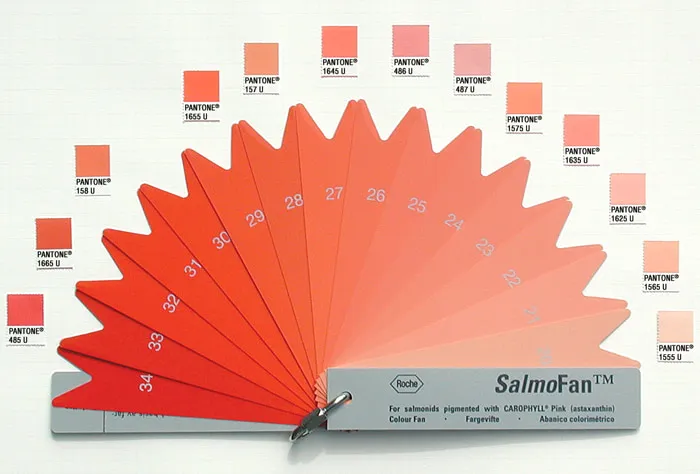Wild salmon gets its robust pink color from a diet rich in red-hued krill. Farmed salmon are fed on fish meal, chicken byproducts, soybeans, wheat and a long list of other monochrome food. The result is a fish that's the same plain gray as tilapia or cod. To make up for this color deficit, salmon farmers feed their fish doses of the carotenoid pigments canthaxanthin and astaxanthin.With the help of the SalmoFan's color swatches, the farmers can decide when their product is blush enough for market. Consumers prefer a deeper shade, with 66% choosing color No. 33.
As with "orange" cheddar, these pigments do not affect taste, nor are they particularly "unnatural". They are the same chemicals found in krill, shrimp, cyanobacteria and, yes, wild salmon. Instead, the coloration persuades (or tricks) customers into thinking that their chain store's coho is fresher, healthier and wilder than it really is.


Comments (0)
Share your thoughts and join the technology debate!
No comments yet
Be the first to share your thoughts!